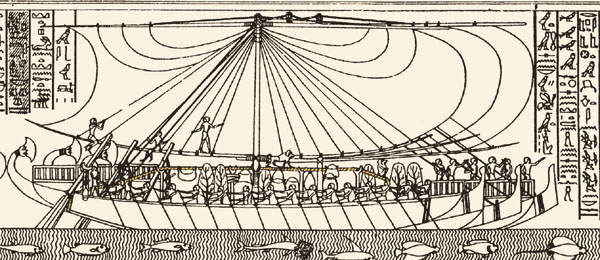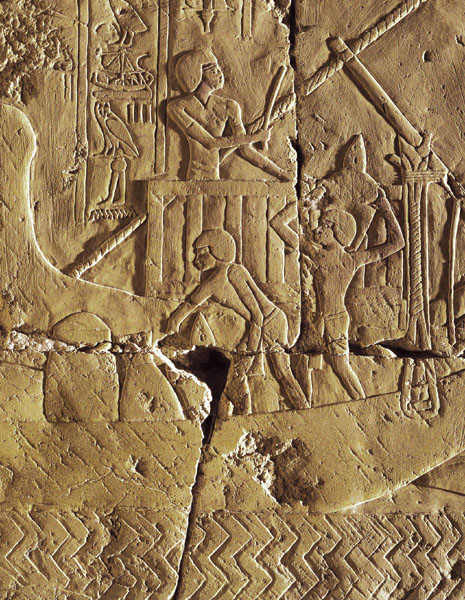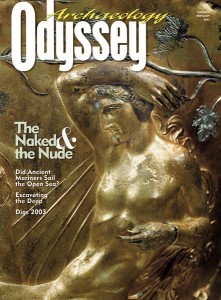Ancient Ships: An Iconographical Tale
Sidebar to: Sailing the Open Seas
Nautical archaeology has taught us much about ancient seafaring, but some details do not survive in the archaeological record. To fill in the picture, we can turn to iconography, that is, ancient depictions of seagoing vessels—though we must remember that depictions of ships are not the ships themselves. Here are some examples of what we can learn from iconography.
The Voyage to Punt


Of the thousands of depictions of ancient Egyptian ships, only three illustrate seagoing vessels. One is a relief (see detail and drawing, above) in the mortuary temple at Deir el Bahri of Queen Hatshepsut (c. 1479–1457 B.C.)—who emphasized foreign relations rather than the conquests favored by her male counterparts.
This scene shows a fleet of ships that Hatshepsut dispatched to the land of Punt (possibly modern Ethiopia). Disassembled ships were hauled over the desert to the Red Sea coast, where the ships were re-assembled and sent south. Upon returning, the ships were again taken apart and hauled back overland to the Nile Valley.
Already a library member? Log in here.
Institution user? Log in with your IP address.

